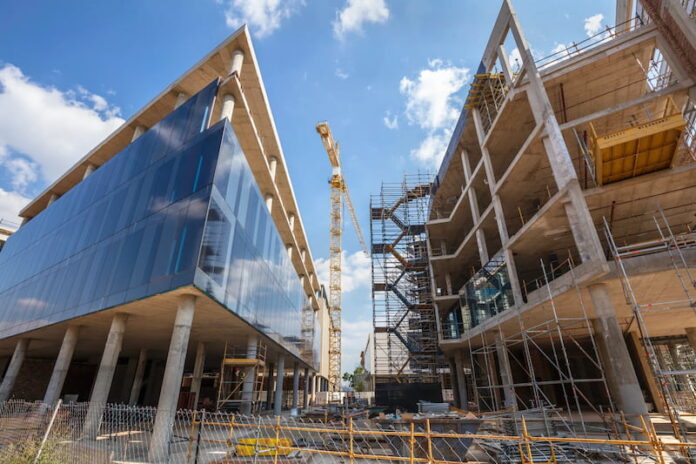Healthcare is continually evolving, and facilities often require renovation, expansion, or even complete reconstruction. Healthcare construction planning is a critical process that ensures these facilities meet the ever-growing demands of modern healthcare plus it ensures that the projects are up to the required standards. In this guide, we will delve into what you should know about healthcare construction planning, from the initial stages of design to the final construction and occupancy.
Assessment of Your Healthcare Needs
Assessing your healthcare needs involves evaluating your current facility’s shortcomings and identifying areas where improvements or expansions are necessary. Needs assessment helps you to understand the specific requirements of your healthcare infrastructure. This ensures that your facility can effectively support patient care, treatment, and medical equipment.
Neglecting this assessment can lead to inefficiencies, compromised care quality, and increased construction and operational costs. Consider factors such as patient volume, medical technology advancements, regulatory compliance, and population growth trends.
Tip: Engage with key stakeholders, including clinicians, administrators, and facility managers, to gain a holistic understanding of these requirements.
Design Meticulously
Design phase in healthcare construction planning is a critical and highly specialized task. It lays the foundation for the entire project, influencing its functionality, efficiency, and cost-effectiveness.
Here, you will need to engage with the right professionals like architects, engineers, and healthcare design experts to create a functional and aesthetically pleasing space. Meticulous design is crucial to give you spaces that support patient care, infection control, and staff workflow.
During this phase, ensure healthcare-specific considerations are addressed. These include integration of cutting-edge medical technologies, future expansions, patient comfort, safety, and privacy. A well-planned design phase not only ensures a state-of-the-art healthcare facility but also minimizes costly changes during construction and promotes the best possible patient outcomes.
Proper Budgeting and Financing
Developing a realistic budget and securing financing are crucial steps in your healthcare construction planning. Construction costs in the healthcare sector can be substantial due to the specialized nature of healthcare facilities and the need for advanced technology and equipment. Therefore, you ought to be thorough in your budget and financing analysis.
Work with construction experts to create detailed cost estimates that account for your construction materials, labor, equipment, and contingencies. Also explore your financing options, which may include loans, grants, or public-private partnerships, to ensure you have the necessary funds to complete the project. Finally, implement cost control measures throughout the construction process to prevent budget overruns.
Construction Management
Effective construction management is vital to ensure your project stays on schedule and within budget. Effective construction management involves meticulous planning, risk assessment, and adherence to regulatory standards specific to healthcare facilities. Collaborate with experienced construction professionals who understand the complexities of healthcare construction.
Work with architects, engineers, project managers, and contractors with a proven track record in healthcare projects. You should check this site for more information on construction expertise and materials. Remember, their expertise and attention to detail is crucial for a successful healthcare construction planning and execution. This ensures that your facility is built to meet the highest standards of patient care and safety.
Regulatory Compliance
One of the most critical aspects of any healthcare construction planning is navigating the complex web of regulatory requirements. Healthcare facilities must comply with numerous federal, state, and local regulations, including building codes, healthcare licensing, and safety standards.
Engage with regulatory experts or consultants who can help you understand and navigate these requirements. Incorporate necessary features like accessibility, fire safety, and infection control measures into the design. Prioritizing regulatory compliance not only safeguards patients but also ensures the longevity and credibility of your healthcare institution.
Occupancy and Transition
The final stage of your healthcare construction planning is the occupancy and transition phase. This involves preparing your facility for full operation, including staff training, equipment installation, and patient transfers. Provide comprehensive training to your healthcare staff to familiarize them with the new facility and any new technology systems.
Ensure that all your healthcare equipment and systems are tested and commissioned before patient care begins. Plan for the safe and efficient transfer of patients from your old facility to the new one, minimizing disruption to patient care
Wrapping up
Healthcare construction planning and execution is a multifaceted process that requires careful consideration of various factors. A well-executed construction plan can result in a state-of-the-art healthcare facility that meets the needs of patients and healthcare providers while adhering to the highest standards of safety and quality. Follow the steps we’ve outlined in this guide to help you through the process of healthcare construction planning and execution. This will help you avoid costly construction mistakes that might come to haunt your project later.
Read Also
- Hardened shelter solutions reshape how military operations stay safe and functional in the fieldDifficult terrain, unpredictable threats and long deployments have driven modern militaries to reconsider how they create safe, reliable spaces in the field. Rigid wall shelters and container-based structures are becoming the quiet backbone of operations, offering durability, mobility and real comfort for the troops and support teams. When most people think of military bases, they… Read more: Hardened shelter solutions reshape how military operations stay safe and functional in the field
- The Function of a CRO for Clinical Trials: Structure, Responsibilities, and Operational ImpactClinical trials rely on organized systems that ensure scientific validity, participant protection, and regulatory compliance. As protocols become more intricate and studies expand across multiple regions, many sponsors collaborate with specialized partners to manage key operational and methodological tasks. A CRO for clinical trials provides this structured support, coordinating the activities required to move a study from… Read more: The Function of a CRO for Clinical Trials: Structure, Responsibilities, and Operational Impact
- Innovative Strategies for Marketing Neuropathy TreatmentsLiving with neuropathy can be difficult, both physically and mentally. As a healthcare professional, you see how much it affects your patients and how important it is to find treatments that truly help. But with new medical updates and a fast-changing digital world, marketing neuropathy treatments can feel overwhelming. This is where fresh, practical strategies… Read more: Innovative Strategies for Marketing Neuropathy Treatments
- The Art of Thumbnails: Smart Design Hacks for More Channel ViewsHave you ever wondered why some videos get thousands of clicks while others are ignored, even if the content is good? The answer often lies in the thumbnail. A thumbnail is the first impression a viewer gets before deciding to watch. It works like a book cover that can pull people in or push them… Read more: The Art of Thumbnails: Smart Design Hacks for More Channel Views
- How to Choose the Right KOL Management Platform for Your Medical Affairs TeamSelecting the right KOL management platform is no longer just a tactical decision, it’s a strategic one. That’s because the platform you choose influences how effectively your medical affairs team identifies key healthcare professionals, engages with them, and sustains long-term scientific relationships. With multiple KOL management companies and technology vendors offering varying levels of data,… Read more: How to Choose the Right KOL Management Platform for Your Medical Affairs Team






